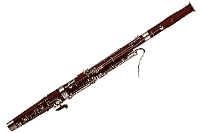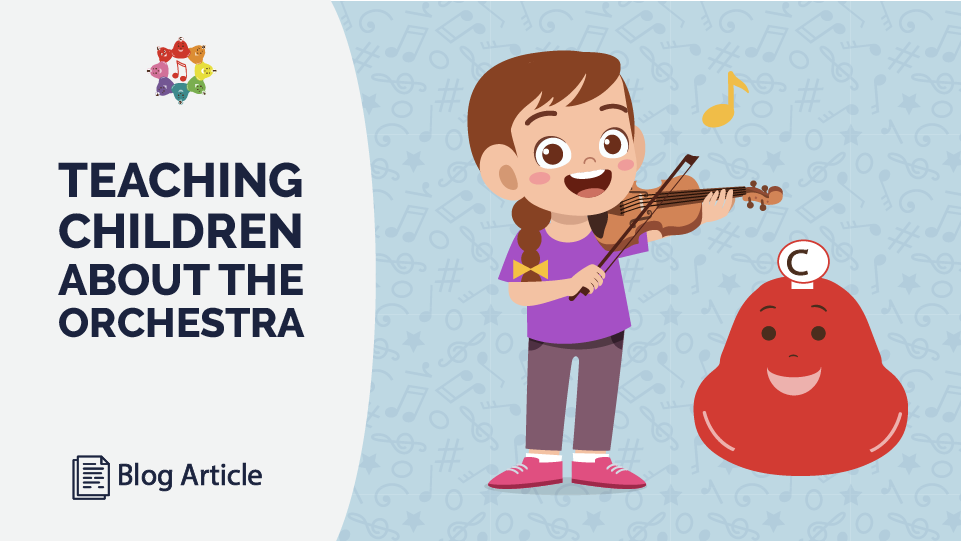Orchestral Fun for Kids!
Young children might surprise you how well they pick up on pitches and timbres (the sound that instruments make). Playing classical and jazz “high information music” has a marked effect in brain activity, and if you play this music during the critical window of auditory learning, can produce remarkable results. For more information and studies about this, see our research page.
An orchestra is an ensemble of instruments with many varying timbres playing together. In an orchestra, there are winds, brass, strings, and percussion instruments. Your child should learn the different families of instruments and be taught to listen to music actively, or to try to listen “for” certain sounds, pitches, or timbres. Such a mental task can seem daunting especially for young children, because most orchestral pieces aren’t pedagogically written to teach children how different instrument families sound… except for these two major orchestral suites that do just that. These orchestral suites should be a staple of active music listening in your household or school.
Peter and the Wolf, by Sergei Prokokiev

Peter and the Wolf is a musical tale that combines narration style storytelling with classical music themes in a memorable fashion. This whimsical musical tale tells the story of Peter, a mischievous young boy that gets into some trouble after ignoring his grandfather’s stern warnings. The theme for each character in the musical is played by an instrument or section. Phil Tulga has compiled each theme on his website, which we’ll share below. Check out his website for the full article on Peter and the Wolf!

The bird’s theme is played by a flute.
The duck’s theme is played by an oboe.![]()

The cat’s theme is played by a clarinet.
The Grandfather’s theme is played by the bassoon.

The wolf’s theme is played by the French horns.
The hunters’ theme is played by the timpani drums.

And lastly, Peter’s theme is played by the strings in the orchestra.
To hear a full recording, narrated by the legendary Boris Karloff (who also narrated the famous original “How the Grinch Stole Christmas”), check out this video!
-
The Young Person’s Guide to the Orchestra, by Benjamin Britten

Another classic recording that pedagogically approaches musical timbre instruction to children is The Young Person’s Guide to the Orchestra. Here, Britten takes a Renaissance piece of music by Henry Purcell and makes it into theme and variations, with each instrument family being highlighted. It is also narrated, and could be made into an entire classroom music lesson on its own! It’s a little more complex than Peter and the Wolf, and might be better suited for older children to understand.
After trying these out, see if your kids can pick out the different instruments or families – you might be surprised at their powers of recall! Then as you work with them, whenever you’re listening to any music throughout the day, ask them, “Hey – what instrument is that?” and see how much they remember. It’s a great way to build up their timbre perception, which will benefit them later on, especially if they go into music. It will help them to be able to “hear in their head” or audiate passages of music.
Here’s a recording of The Young Person’s Guide, and we’re providing a full index to it! Thanks to AntPDC on Youtube for making the index!
02:40 – Theme: Allegro maestoso e largamente
Tutti, Woodwinds, Brass, Strings, then Percussion
03:18 – Variation A: Presto:
Piccolo and Flute
03:49 – Variation B: Lento:
Oboes
05:07 – Variation C: Moderato:
Clarinets
05:50 – Variation D: Allegro alla marcia:
Bassoons
06:46 – Variation E: Brillante: alla polacca:
Violins
07:33 – Variation F: Meno mosso:
Violas
08:43 – Variation G:
Cellos
09:54 – Variation H: Cominciando lento ma poco a poco accel. al Allegro:
Double Basses
10:55 – Variation I: Maestoso:
Harp
11:50 – Variation J: L’istesso tempo:
Horns
12:53 – Variation K: Vivace:
Trumpets
13:26 – Variation L: Allegro pomposo:
Trombones and Bass-Tuba
14:33 – Variation M: Moderato:
Percussion (Timpani; Bass Drum & Cymbals; Tambourine & Triangle; Snare Drum & Wood Block; Xylophone; Castanets & Gong; Whip; Percussion Tutti)
16:10 – Fugue: Tutti, Allegro molto



I love this simple explanation of the instruments of the orchestra.
Pingback: Month of the Young Child - Free Resource Roundup - Prodigies Music Curriculum
Pingback: A Bonkers Busy Music Monday: Piano Prodigies Preview, Take Me Out to the Ball Game Sheet Music, Cash Giveaway Winner, New Songbook Videos & More %% - Prodigies Music Curriculum
Pingback: The Ultimate How to Teach Music in Homeschool Guide - Prodigies Music Curriculum